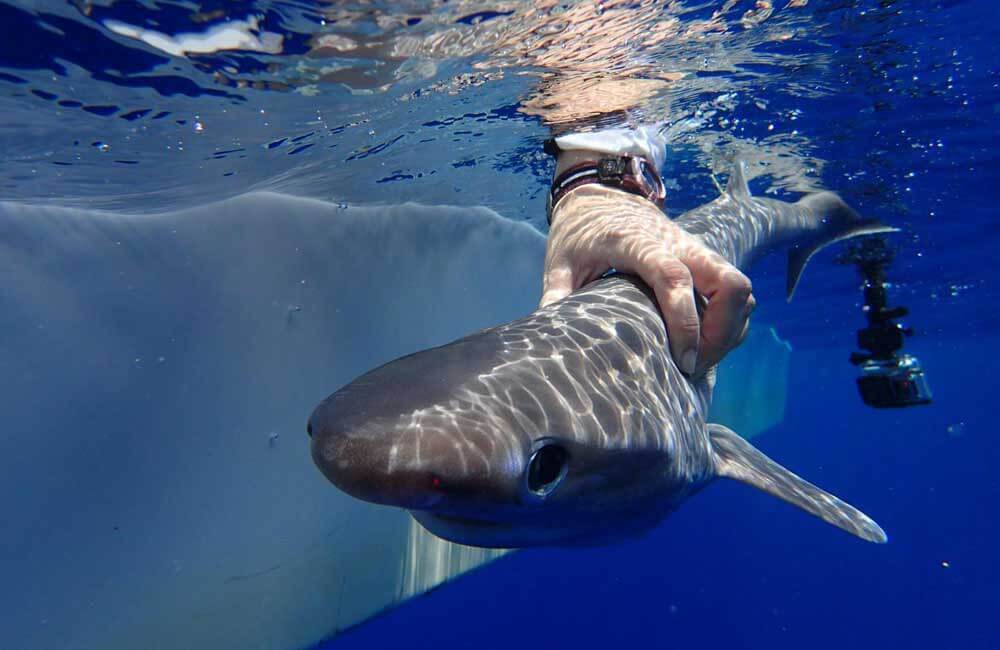
A new species of sixgill shark has been identified by a team of scientists based at the Florida Institute of Technology.
The elusive sixgill shark is a deep-water fish, recorded at depths of over 750m, but rarely seen above 200m, making study of these creatures particularly difficult. With an ancestry stretching back over 250 million years, sixgills are among the oldest creatures in the world, and were divided into two species, the bluntnose sixgill (Hexanchus griseus) and the bigeye sixgill (Hexanchus nakamurai), first described in 1788 and 1962 respectively.
The sharks are characterised by their broad, pointed heads, unique comb-like teeth in their lower jaw, a long tail, and the six gill slits for which they are named (most sharks have five). They are slow-moving creatures and have been observed among the first scavengers to reach the carcasses of dead animals that have sunk to the ocean floor. They are thought to be distributed worldwide, however, sightings are so rare that this has not been confirmed.
Species determination for the bigeye sixgill has long been the subject of discussion, with those found in the Atlantic originally being differentiated from those found in the Indo-Pacific region. Despite a difference in size, previous studies have proven inconclusive. The original binomial identification of Hexanchus vitulus was abandoned, and a single species of bigeye sixgill classified under H. nakamuri.
For this reason, the team from the Florida Institute of Technology, led by Toby Daly-Engel, assistant professor of biological science, wish to resurrect the classification of Hexanchus vitulus for the new species, with its common name becoming the ‘Atlantic sixgill shark.’
Working in Belize, the Bahamas and the Gulf of Mexico, the team were able to collect samples from captured sharks and compare them on a genetic level to those found in the Indo-Pacific. Analysis of 1,310 base pairs of mitochondrial DNA were tested, and proved that the sharks were different on a genetic level
‘We showed that the sixgills in the Atlantic are actually very different from the ones in the Indian and Pacific Oceans on a molecular level, to the point where it is obvious that they’re a different species even though they look very similar to the naked eye,’ Daly-Engel said.
The new classification may provide better detail for conservation of the sixgill shark, despite relatively little being known about them
‘Because we now know there are two unique species, we have a sense of the overall variation in populations of sixgills,’ said Daly-Englel. ‘We understand that if we overfish one of them, they will not replenish from elsewhere in the world.’


